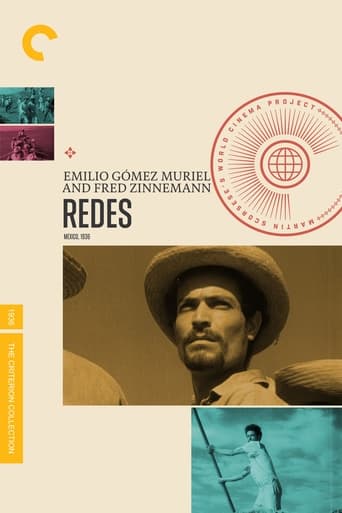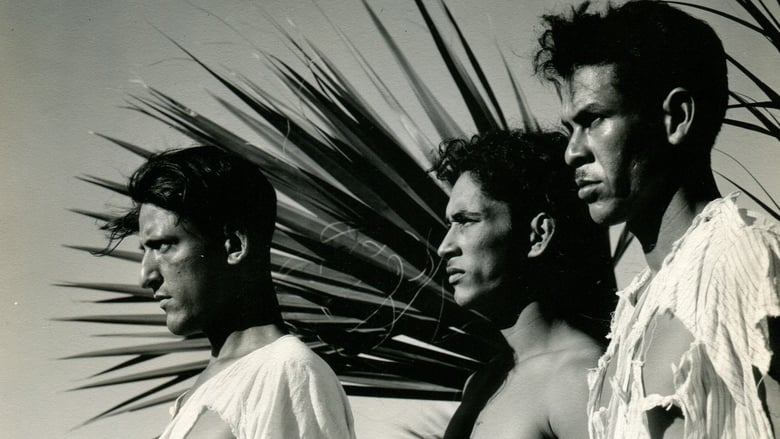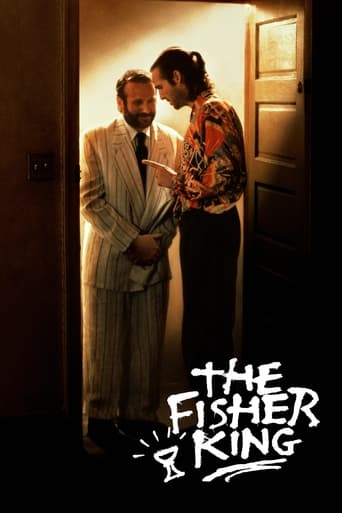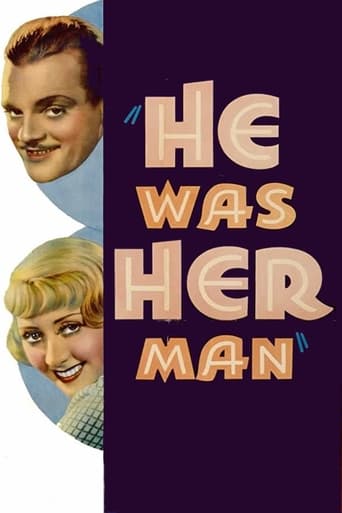

Redes (1936)
A Mexican fisherman, whose son has died because he could not afford necessary medical care out of his meagre wages, becomes aware of how badly exploited he and his many fellow fisherman are by the one greedy man for whom they work and the corrupt politician who makes the laws to benefit him.
Watch Trailer
Cast
Similar titles







Reviews
Best movie of this year hands down!
Powerful
I don't have all the words right now but this film is a work of art.
Actress is magnificent and exudes a hypnotic screen presence in this affecting drama.
I would certainly agree with the previous comment that this film is worth watching due to the poignant camera work of Paul Strand and the score of Silvestre Revueltas that intensifies the emotional power evoked by Strand's cinematography (that Strand seems not cut out to be a cinematographer is hardly surprising - he was actually a prominent US photographer commissioned by Narcisso Bassols, then Mexican Minister of Education to make this revolutionary film).I'll also add that as a film this is an important socio-political moment as it marks the emergence of a Revolutionary national cinema very much in the collectivist spirit of Eisenstein's Battleship Potemkin. The editing mimicks the Russian director's use of separate cell blocks (shots) to translate the Marxist social dialectic of thesis + antithesis = synthesis into a filmic language labelled Soviet Montage. The film's clearest example of this is the juxtaposition of 'photographic' images when the politician shoots Miro. Eisenstein's influence permeates Redes (for example, real people acted in the film, replacing hired actors (except Miro), coping Eisenstein's use of typage), as it did Mexican film in general during this Revolutionary era, due largely to his philosophy and the fact he actually went to Mexico and shot a film, 'Que Viva Mexico!' in 1932. For those interested in things Eisenstein, I would recommend Potemkin, Strike, and Oktober, the latter contains a barrel-of-gun scene which surely inspired the aforementioned murder of Miro.To analyse this film as a Revolutionary piece of art would be to give its best interpretation, therefore the cinematography of Strand ought to be compared to the photography of Edward Weston and Tina Modotti, other important contributors to the visual arts element of the revolutionary movement. Indeed the doctrines of Eisenstein are reflected in the fact both Modotti and Strand were members of the Communist party, alongside such notables as Diego Rivera and Frida Kahlo. Strand's portrayal of weighing scales shot as to evoke the scythe, the symbol of the Communist Party, could easily be a Modotti still.As an example of revolutionary art, beautiful cinematography, and emotive music, this film is a worthwhile watch, especially for those familiar with the work of Eisenstein, Modotti, and Weston.
This is not a great movie: the characters are made out of cardboard, the plot is standard "Waiting for Lefty" with a heavier emphasis on historical materialism, and some of the actors are barely that. But it is still worth seeing, for two reasons: Paul Strand's beautiful pictures and Silvestre Revueltas' beautiful score.Strand was not cut out to be a cinematographer: his shots are as static as a still photo. Not surprising, considering that Strand was one of the greatest photographers of the last century. You can see how much he loved taking the portraits of clouds, the sea, and the fishermen who are the heroes of this film-which doesn't make a good movie, but is still a delight to watch. As for Revueltas' score, someone who knows more about music will have to comment on it. It is enough to say that it is powerful, not overstated, and modern. He apparently wrote much of the score before the movie was finished, so it doesn't have the interplay with the film itself that Herrmann's score for Vertigo or Fumio Hayasaka's score for Seven Samurai does. But it is still wonderful, particularly if you hear it played by a good orchestra.


